Posts Tagged ‘Lead’
D-I-V-O-R-C-E….Is the Frisco-Exide Settlement On the Rocks?
 After a brief honeymoon, is it Splitsville for the 2012 clean-up agreement between Exide and the City of Frisco? And if their shotgun marriage is breaking apart, what are the implications for Frisco residents and the surrounding area, including Lake Lewisville, a source of drinking water for Dallas that sits directly downstream of what now may become a Superfund site?
After a brief honeymoon, is it Splitsville for the 2012 clean-up agreement between Exide and the City of Frisco? And if their shotgun marriage is breaking apart, what are the implications for Frisco residents and the surrounding area, including Lake Lewisville, a source of drinking water for Dallas that sits directly downstream of what now may become a Superfund site?
On February 25th, Channel 11 broke the story that, after almost two years of assuming the settlement would guide clean-up efforts, the City of Frisco doesn't "know if the company will stick with the deal or walk away from it until the company files a reorganization plan by the end of May."
That's a big deal. Having declared bankruptcy last year, Exide is now dealing with thousands of creditors with competing claims. Frisco is only one of them, and only one of a half dozen closed or operating lead smelter sites that are also suffering from contamination. If the City's deal with the company can't survive the bankruptcy process, all the current planning for clean-up and redevelopment of the outer ring of Exide will be derailed. And that's important because the settlement has been the Frisco City Council's justification for not opening up the fate of the property to more public discussion, like whether residents would prefer building a toxic landfill and keeping Exide's waste in town, or cleaning up the entire sire and hauling off all contamination to allow for normal development.
It's also important because without the city's deal in place, and Exide in bankruptcy court, there is no Plan B to prevent the entire site from becoming an EPA federal Superfund site, exactly the same way the still languishing RSR lead smelter site in West Dallas ended up as as Superfund site in the early 1990's after that company went belly up. It's a designation that Frisco officials are known to dread.
There have been signs of trouble with the agreement for months now. According to documents filed by the City of Frisco in federal bankruptcy court last December, Exide is in default on its agreement with the City, and risks further claims of breaches, as well as “fraud in the negotiation, execution, and performance” of the settlement.
The historic 2012 settlement arranged for a swap of 179 acres of Exide-owned land in Frisco in return for $45 million from the Frisco Economic Development Corporation and the Frisco Community Development Corporation. Passed unanimously by the Frisco City Council with only a week’s public notice and no public hearings, the agreement closed the smelter earlier than expected but is based on an elaborate series of conditions and clean-up standards.
It’s at least one of those conditions, the required demolition of “all above-ground structures” in a section of the smelter site the city is purchasing called the “Bowtie Parcel,” which appears to be the center of the default claim by Frisco. Specifically, it’s the continued presence of a specialized building involved in the treatment of the smelter’s wastewater known as “The Crystallizer,” that prompted the legal tension.
Last August, Mack Borchardt, the City’s Special Assistant in charge of monitoring the Exide clean-up, wrote a letter to the company disputing the Agreement’s demolition provision had been fulfilled as long as the Crystallizer remained standing:
“Frisco disagrees with your assessment that the demolition activities on the Bowtie Property have been completed and demand that you retract Exide’s notice immediately. For example, the Master Settlement Agreement requires (A)ll above ground facilities on the Bowtie Parcel…” to be removed from the Bowtie Parcel as part of Demolition Activities.” The above ground facilities include the Crystallizer which has not been removed and it has not been approved in writing by Frisco to remain standing. If you fail to immediately withdraw Exide’s notice, Frisco reserves the right to pursue all available remedies.”
By December 9th, when a Bankruptcy Court deadline required the City to file its claims against Exide, Frisco City Hall was adamant that “Exide has not demolished and removed all above ground facilities…. As a result, Exide is in default on its performance obligations under the Master Settlement Agreement.” But along with that outstanding claim, City lawyers also added a new list of possible Exide violations, both civil and criminal:
“Finally, Frisco may also have additional contract and/or tort based claims against Exide, including,without limitation, breaches of the Master Settlement Agreement, nuisance, quantum meruit, money had and received, breach of fiduciary duty, negligence and gross negligence, conspiracy, and claims based on fraud and fraud in the inducement and/or negligent misrepresentations relating to the negotiation, execution, and performance of the Master Settlement Agreement.”
If the deal between Frisco and Exide comes apart, there’s nothing to guarantee that any of the smelter property gets cleaned-up or redeveloped the way the City’s been promising.
Although the entire Exide smelter site and surrounding property is full of toxic hot spots, the facility at the center of the latest legal dispute, “the Crystallizer,” has been a source of particular regulatory concern. As part of the final processing of contaminated waste water at the smelter, it condensed filtered liquids into sodium sulfate solids.
In a December 2009 report, EPA inspectors at Exide observed, “Uncontrolled salt laden runoff from the Crystallizer plant was observed as salt deposition on the concrete aprons around this process area at the plant. The ‘frac’ tank used for holding purge water from the crystallizer plant was leaking at the time of viewing.” This crystallized substance tested high for toxic metals content and testing of the contents of the frac tank showed toxic levels of selenium and cadmium.
In September 2010 inspectors again found “uncontrolled salt laden runoff from the Crystallizer plant and also that the frac tank was leaking.”
In July of last year the Texas Commission on Environmental Quality reported that “the levels of sulfate in soils surrounding the Crystallizer unit are much higher than in other areas” and “drums of PCBs were noted in the Crystallizer area.” PCBs, or Polychlorinated biphenyls, were once widely used as cooling fluids, but have been banned in the US since 1979 because of their persistent toxicity.
Because of its use of chlorine in treatment of waste, the Crystallizer could also be one of the major reasons Exide became one of Texas’ largest Dioxin polluters. In 2009, the Frisco facility was ranked as the 9th largest source for Dioxin pollution in Texas, surpassing all other North Texas facilities, including the Midlothian cement plants. Dioxin is one of the most potent toxins ever tested by EPA, and is measured in grams, not pounds.
Despite this history, no testing for Dioxin contamination has ever taken place at the former Exide smelter site by any regulatory agency, and that’s a point of contention for critics of the smelter clean-up.
Exide’s choice to risk an agreement that could give it $45 million in much-needed cash over the demolition of one remaining structure is curious. And it’s one that poses a challenge to the entire future the City of Frisco has laid out for the smelter site. If the City doesn’t buy the 179 acres of Exide property surrounding the smelter, it’s fate will be tied to the company’s and it might either become part of a future Superfund site or languish in a kind of real estate purgatory for a very long time.
That would more than double the size of the economic black hole the core plant site already poses for central Frisco. Frisco City Hall has come out in favor of locating a permanent toxic dump for Exide waste on that core property, but residents who are members of the local group Frisco Unleaded says there’s no reason to believe an Exide landfill would be run any better than an Exide smelter.
There's already been documentation of extensive lead contamination up and down Stewart Creek from the Exide property, through Grand Park and all the way to Lake Lewisville. Although the City of Dallas Water Utilities Department says that's not a threat to the city's drinking water because of its treatment facilities, the presence of a large landfill and/or Superfund site poses a danger of catastrophic releases that an operating smelter doesn't. And of course, recreational users of the Lake are being routinely exposed.
On February 26th, the Dallas Morning News identified competing plans for the clean-up of Stewart Creek as another source of tension between Frisco and Exide.
The only good news from this great unraveling is that it provides a chance to restart the public debate about what to do with the Exide site – a debate that was short-circuited by the council's settlement agreement that made everything seem like a done deal, even though its obvious now there were a lot of unanswered questions. There continues to be a need for a bottom-up, community wide discussion of what Frisco residents want to see happen with the site. Events in May might make that a more pressing priority.
Why Does The Frisco City Council Want to Build a Lead Fukushima in the Middle of Town?
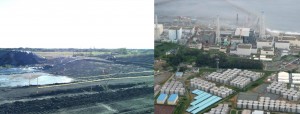 On Monday the Washington Post published a comprehensive look at the troubled Fukushima nuclear power plant site two-and-a-half years after meltdown, and concludes that the clean-up "is turning into another kind of disaster." The same could be said of the Exide lead smelter clean-up in Frisco, and indeed the stories parallel one another in eerie ways.
On Monday the Washington Post published a comprehensive look at the troubled Fukushima nuclear power plant site two-and-a-half years after meltdown, and concludes that the clean-up "is turning into another kind of disaster." The same could be said of the Exide lead smelter clean-up in Frisco, and indeed the stories parallel one another in eerie ways.
One of the most difficult problems at Fukushima has been what to do with so much groundwater flowing through the site. It's already retaining enough radioactive water to fill Yankee Stadium, but almost 400 tons a day still flows into the Pacific. As it turns out, the plant site sits on top of an old riverbed.
One of the most difficult problems at the Exide site is the amount of groundwater running underneath it, flowing into Stewart Creek and on to Lake Lewisville, a source of drinking water for Dallas. As it turns out, some of the most contaminated parts of the Exide facility were built on top of an old branch of Stewart Creek and the facility almost entirely sits in the creek's flood plain. So much groundwater has been found under Exide that the state had to admit that the entire site belonged in a different clean-up category that's 100 times stricter than what it had initially proposed because we could end up drinking that water.
In Japan, Tokyo Electric, the company responsible for the accident three years ago is now responsible for the site's clean-up. It's not going well.
In Frisco, Exide Technologies, the company responsible for causing widespread lead contamination is also in charge of the clean-up of the site. That's not going well in Frisco either.
Tokyo Electric is on the brink of bankruptcy. Exide is already there.
Tokyo Electric keeps under-estimating the scope of the required clean-up, it "doesn't have enough of that questioning attitude" according to one U.S. nuclear official, making the same mistakes that lead to the meltdown. Likewise, Exide keeps underestimating the extent of the contamination at its Frisco site and how much effort it will take to clean it up. It's clean-up plans have been rejected by the state and EPA.
Failure by Tokyo Electric to contain the groundwater problem at Fukushima has lead the government to propose a $500 million "ice wall" that would hold back tons of radioactive water contaminating from the ocean. Failure of Exide to adequately isolate its toxic lead waste from the groundwater running underneath it has prompted a consultant for the City of Frisco to propose building a $23 million, mile-long "slurry wall" to surround a permanent toxic waste landfill on the Exide site, designed to hold back waste from contaminating Stewart Creek and Grand Park.
Tokyo Electric had a plan to "decontaminate" the groundwater on site, only it's never worked, leaving tons and tons of highly radioactive water in storage at the plant. Exide had a plan to "decontaminate" its illegally-stored toxic waste on site, but can't seem to find a way to make it work, leaving thousands of tons of highly toxic lead waste stored at the smelter site.
Tokyo Electric has lost the trust of government officials and the public at large, but is still being allowed to direct the clean-up of its own site. Likewise, even the City of Frisco is skeptical of Exide these days, but the company is still setting the pace for its own clean-up.
But there is one important exception to these parallels. Frisco still has time to change its fate. By December 9th, the Frisco City Council must submit a claim to the judge hearing the Exide bankruptcy case. It can submit a claim for the $23 million option that leaves a toxic landfill in Frisco forever, or it can submit a claim for $135 million, the amount its consultant says is needed to dig-up Exide contamination and haul it away so the land can be redeveloped.
Why would the Council choose any other option other than the most comprehensive one? Great question that no one at City Hall has been able to answer. The submission of the claim to the judge doesn't obligate the city to pay for the clean-up. It's a statement of its goals for the clean-up.
Nobody expects the City to get everything it's asking for, but in a proceeding where many other creditors have lined up to carve up Exide's assets, it needs to protect its self-interests by asking for the maximum credible amount. That's the $135 million figure, backed-up by a report from a city consultant that describes the extensive contamination caused by Exide and what it will take to remove it.
If you haven't already, please send an e-mail to the Frisco City Council requesting that they submit the $135 million claim by the court's deadline of December 9th. To approve the toxic landfill option is to consign Frisco to getting fully "Fukushimaed."
Why Exide Going Bankrupt Could Be a Good Thing
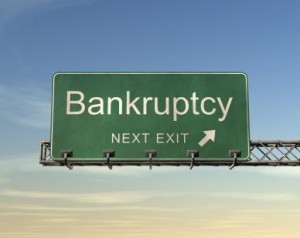 A months-long deathwatch surrounding Exide Technologies got a little closer to its climax on Thursday with a Wall Street Journal story quoting "people familiar with the matter" as saying the company was preparing to file for bankruptcy for a second time in a decade sometime this summer.
A months-long deathwatch surrounding Exide Technologies got a little closer to its climax on Thursday with a Wall Street Journal story quoting "people familiar with the matter" as saying the company was preparing to file for bankruptcy for a second time in a decade sometime this summer.
The original article is behind the Journal's pay wall, but it provides some details as to how the mechanics of such move would work. For one thing, the company's European operations won't be affected at all, according to the story. That's a hint that the company wants to find a way to fully separate its substantial US environmental liabilities – including the toxic waste dump formally known as the Frisco lead smelter – from what it considers to be its more salvageable parts.
Exide is carrying approximately $700 million in debt and many financial analysts doubt its ability to repay a $56 million note due in September. Thus, the summer timing. There was also probably some consideration to cash out while there was still some cash left. Shares of he company were selling for a record low of 34 cents on Thursday. It's last quarterly report in December 2012 cited a $15.4 million loss compared to a profit of $68 million in 2011.
Meanwhile, the company is providing plenty of work for lawyers and bankers:
Restructuring lawyers at Skadden, Arps, Slate, Meagher & Flom LLP are working with the company, while law firm Akin Gump Strauss Hauer & Feld LLP is advising an independent board committee, the people said. Paul, Weiss, Rifkind, Wharton & Garrison LLP is working with some bondholders and Andrews Kurth LLP is working with convertible-note holders, these people said.
Turnaround firm Alvarez & Marsal is working with the company, investment bank Houlihan Lokey is working with some bondholders and Moelis & Co. is working with convertible-note holders, they added.
Even money that the company has already spent more on this effort than they have cleaning up their mess in Frisco.
While completely predictable, this development now puts the City of Frisco at a crossroads for which it's not prepared.
Exide had no intention of rehabilitating or cleaning-up its Frisco smelter site – the part that still has decades and tons of lead contaminated waste buried in the ground – to provide for normal redevelopment. Even assuming the company and City are completely successful in cleaning up the outer zone of smelter property that the City is buying, there's no such plans for the 100 acres or more of hardcore toxic smelter property that was the core of the operations – and which has Stewart Creek running through it. The same Stewart Creek that runs from Exide into the proposed Grand Park. No matter how much the City tried to put a pretty bow on this situation, it still left a big toxic turd floating in the punchbowl, for which there was no contingency plans.
The upside of an Exide bankruptcy is that now the company won't be able to hold the rest of the City hostage by keeping the site a toxic dump forever. Because it won't own it anymore. Going belly up means there are other options besides the ones Exide was dictating because of its ownership.
On the other hand, bankruptcy for a company such as Exide usually means its environmental liabilities are absorbed by the taxpayers via the federal Superfund Site list. Exide already owns an abandoned local lead smelter. Dixie Smelter in South Dallas closed in 1990 as a result of the city's crack down on inner city lead smelters. It's been a fenced-off no man's land ever since. This is what Frisco city officials dread now. Once it's listed for clean-up it may take decades for it to actually happen. The result is the same as if Exide never lost ownership – you still have a toxic waste dump with the Creek running through it on the way to your new regional park.
What to do? The big difference between this lead smelter site and the ones in Dallas is location. Although originally sited on "the other side of the tracks" in Frisco, the city has transformed itself into the North Texas suburb of choice, to the point where the smelter property is now surrounded by exclusive gated communities and malls.
The City should use this fact, and this brief moment before actual bankruptcy, to work with Exide, the EPA, private developers who specialize in reclaiming contaminated sites, and local banks to formalize a plan to completely clean up the entire Exide smelter site in return for being able to build a signature project that will connect Grand Park to Downtown Frisco. Imagine if the smelter and its waste wasn't there on the property – immediately on the North Dallas Tollroad, with a creek running through it, connected to the city's signature green space. It would be another Los Colinas.
The problem, and its a huge one, is to assemble the considerable money it would take to clean the property, while also raising the money it would take to actually build the project, and assume liability for whatever surprises might be found on site in the future. Frisco could do its part by giving generous tax breaks to the developers. EPA could do its part by easing regulatory requirements for transfer. Exide could do its part by selling the land to the City for $1 so that Frisco could concentrate its resources on rehabilitation, not purchase price. There is now considerable self-interest to work a deal that wasn't there before the Exide bankruptcy.
The point is, Frisco officials must be able to answer the question: What's the ultimate plan for Exide property? To let it sit as a toxic waste dump? To let it sit as a toxic waste dump next to a new park that features the same creek that runs through the toxic waste dump? Or is there something more that can and should be done?
City Hall showed a great deal of creativity in drawing up the agreement that resulted in shutting Exide's outlaw smelter operation down. It now needs to exert the same creativity in coming up with a rescue plan for the property the smelter left behind.
Residents Push Back on Frisco Smelter Clean-Up Standards; Report Raises Questions About Huge New City Park Next to “Potential Superfund Site”
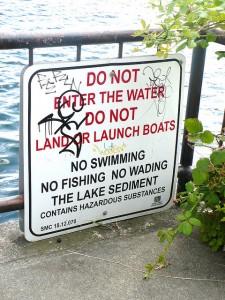 (Frisco)–Frisco residents directly challenged their city’s attempt to gloss over what they say is an important decision to use a less-protective testing method to find toxic contamination on the Exide smelter site, while also releasing a new report that chronicles how that contamination could disrupt plans to build the city’s ambitious “Grand Park.”
(Frisco)–Frisco residents directly challenged their city’s attempt to gloss over what they say is an important decision to use a less-protective testing method to find toxic contamination on the Exide smelter site, while also releasing a new report that chronicles how that contamination could disrupt plans to build the city’s ambitious “Grand Park.”
Saying city officials either don’t know what method is actually being used for finding “hot spots” of contamination, or isn’t being truthful about its use, members of Frisco Unleaded contrasted an official city denial from Assistant City Manager Ron Patterson with a March memo from the Texas Commission on Environmental Quality.
“Although you state in your response….“an industrial sampling protocol is not being used on the J Parcel,” you are incorrect,” says a letter sent by the group to Patterson and the Frisco City Council on Monday. “Please refer to the Texas Commission on Environmental Quality memo, dated March 8th of this year, accompanying our May 28th letter….TCEQ’s Danielle Lesikar clearly states that the 2 samples per acre testing method, “is a Commercial Industrial Standard,” and “only meets (the) Commercial-Industrial” standards. We’d appreciate if you’d forward documentation that disproves this statement….”
Members of the group say the difference is small but critical. Instead of eight soil samples per acre at the highly contaminated site, Exide is only sampling twice per acre, and so far less likely to find all the toxic material that needs to be removed to bring down high levels of lead, cadmium and other potential contaminants after almost 50 years of smelter operation.
Making sure there are no toxic surprises is important for redevelopment of the site itself, as well as the construction and use of the City’s new 275-acre Grand Park, located only 500 feet away from the smelter property and directly downstream of the Exide contamination via Stewart Creek, which is key to the park’s chain of lakes and water features. That’s the subject of the group’s new report.
“Poisoned Park? How Exide’s Lead Contamination Risks Frisco’s Grand Park,” was released to coincide with the last of three public “design meetings” for Grand Park at City Hall on Monday afternoon. In it, Frisco Unleaded compiles the long litany of abuse to Stewart Creek and the surrounding land by the smelter recorded by state and federal inspectors, including lining the banks of the Creek with toxic lead slag waste, dumping lead waste directly into the Creek, and locating waste dumps and pits in its floodplains.
“This poor Creek has been more or less an open sewer for the entire Exide smelter property for decades. There’s every indication that a lot of contamination is still there. And yet city officials are pretending that they aren’t trying to build a huge park centered along the course of this same Creek, immediately next door, and upstream of the Smelter. None of the previous design meetings have even raised the possibility of an environmental assessment of the threat Exide’s contamination poses to the Park,” said Frisco Unleaded board member Meghan Green.
Besides chronicling the past and current threats to the creek and potential ones to the new Park, the report features the boundaries of Exide’s hazardous waster permit superimposed on FEMA 100-year floodplain maps and USGS topographical maps to indicate how much of Stewart Creek has been affected by the Smelter, which literally sits on either side of its banks before flowing west under the Dallas North Tollway into what would be the new Grand Park.
“It’s important to get the most protective clean-up of the Exide property that we can” said Frisco Unleaded Chair Colette McCadden, “because all of the run-off from the property will be headed directly into the Park and the City itself has proposed building an entire Stewart Creek green belt corridor that would follow the Creek into the Park. This isn’t an industrial site that is sitting in isolation from people and activity. This is a site that’s next to Frisco’s largest park.”
“With the financial condition of the company deteriorating,” added Downwinders at Risk Director Jim Schermbeck, “it’s very possible the smelter site could end up on the EPA’s federal Superfund Site list, and then you’d have the a toxic waste dump site as a neighbor to Frisco’s most ambitious park.”
Among problems for Grand Park development pointed out by the report:
- Despite inspection reports citing known and potential contamination affecting Stewart Creek, no remediation has been performed there in 13 years.
- There’s not sufficient protection from flooding at the site, despite most of the facility being located in low-lying, flood prone areas.
- The FEMA 100-year floodplain runs directly through a landfill full of Exide lead slag, within just 100 feet of a “waste pile” of contaminated dredging from Stewart Creek, and within 200 feet of lead landfills that are in various states of disrepair.
- There’s been no extensive testing of soil, sediment or water within the boundaries of the new park, or between the Smelter and the park, where new contamination has recently been discovered.
The report makes four specific recommendations to insure park and public safety:
- City Officials should commission a full environmental assessment of the Grand Park Project before project planning and development go any further.
- The clean-up of the Exide smelter site should be to the most protective “Residential” standards to allow for open spaces use along Stewart Creek.
- All landfills, dumps and pits of lead waste should be removed from the Exide site to prevent future contamination problems from occurring.
- The water quality of Stewart Creek must be assured.
Frisco Kids Play Within Feet of a Hazardous Waste Dump
This is a 23 second video shot on the corner of Eubanks and 5th Street in Frisco earlier this month. This corner is the northeast border for the property owned by the Exide lead smelter.
When it begins, the camera is looking south toward the now shuttered smelter. In fact, at the 3-second mark, you actualy see the smelter's smokestacks betwen two trees for a brief moment. In front of those trees is the fenceline separating the smelter property from the public. Immediately behind those trees is a berm that marks where the smelter's active landfill is.
This "non-hazardous" landfill holds approximately 9 million pounds of lead-contaminated waste. Lead itself is dangerous, but Exide got caught illegally burying hazarous waste in this non-hazardous landfill. The company's remedy is to dig the hazardous waste up, "re-treat it" and then re-bury it in exactly the same landfill. All this is to be done at the edge of the smelter's property at this corner of Eubanks and 5th.
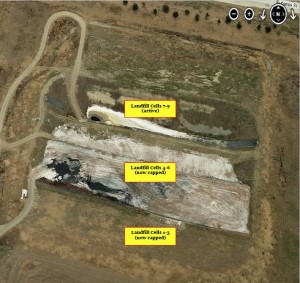
This is an aerial pic of the Exide active landfill operation at the corner of Eubanks and 5th Street. The line of the trees at the top right are the same ones you see in the video.
Besides this waste from production, Exide is now using the landfill to dispose of as much smelter demolition waste as possible. That makes it the most active spot on the smelter property at this point, with trucks full of waste coming and going besides the on-going "digging and "re-treatment" there.
And when Exide is finished stuffing all the lead-contaminated waste it can into this landfill, it hopes to leave it buried in Frisco forever.
Directly across the street from this illegal hazardous waste landfill is the "Play Ball" rec center for kids – a batting cage business. On nice days, you can usually find the south-facing/smelter-facing metal garage door wide open to allow for air circulation for the kids taking practice inside.You can also find their sibings and peers playing on the front driveway, only about 50-100 feet away from the lip of that landfill berm.
When the wind is out of the south, as it often is from March to October, the Play Ball batting cages and the kids there are are directly downwind of the smelter and the landfill operation. A lead-in-air monitor operated by the the Texas Commission on Environmental Quality is located on Eubanks. It's that skinny white pole in the middle of the frame at the 5-second mark. This monitor has repeatedly found concentrations of lead in the air higher than the EPA's new national lead in air standard – since the smelter closed.
So not only are these kids subject to being downwind of all of the smelter's demolition activity. They're also just across the street from the most heavily used part of the smelter now, with a much larger risk of getting contaminated.
Exide, the City of Frisco and the Texas Commission on Environmental Quality all would have you believe that everything is hunky-dory at the lead-smelter site. Look, the smokestacks are coming down! But in reality, this site is still posing risks for Frisco children who are still playing right across the street.
If Exide Goes Bankrupt, What Happens to the Lead-Filled Landfills of Frisco?
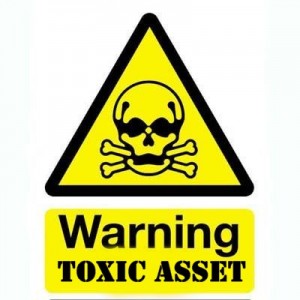 Last week the Exide battery company, owner of the now defunct Frisco lead smelter, hired a financial "restructuring" specialist firm by the name of Lazard, although the media coverage that followed the move suggested the more apt moniker could be Lazarus.
Last week the Exide battery company, owner of the now defunct Frisco lead smelter, hired a financial "restructuring" specialist firm by the name of Lazard, although the media coverage that followed the move suggested the more apt moniker could be Lazarus.
"Exide Technologies has been in the midst of a turnaround for awhile now and, like a car stuck in a snowbank, it hasn't been able to gain traction. Yesterday's price action on its stock suggests the market thinks it's going to end up in the ditch."
The news came on the same day the Los Angeles-based law firm of Glancy, Binkow & Goldberg said it would look into claims on behalf of Exide stockholders about possible violations of federal securities laws. Specifically, the firm’s investigation concerns allegations Exide issued misleading statements or failed to disclose material adverse facts concerning the company’s operations.
Nationwide, the company has been pulling back, selling off assets and closing plants. At last count, it had one operating smelter left in the US, and Exide just received noticed from the State of California that it will have to significantly reduce its pollution or it will be forced to close for causing a cancer hazard.
Meanwhile, the company is in the middle of a forced withdrawal from its Frisco smelter site, removing most buildings and surface structures, but leaving millions of pounds of lead contaminated smelter waste behind in a variety of landfills and dumps. It got some needed cash when the City of Frisco purchased surrounding acreage that was never the site of any production, but Exide is retaining ownership of the core smelter site – the very most toxic part.
Besides begging the question of whether this is the kind of company you want owning 100 toxic acres in the middle of your town – what happens if Exide doesn't own it? If the company goes bankrupt, who's responsible for insuring a thorough clean-up of the site, or doing anything else with it…ever?
You have to ask yourself if you were buying Exide's assets, would you really want a former smelter site with no smelter and lots of potential clean-up problems? On the other hand, the only path toward redevelopment of any kind hinges on the location of the land being in one of the region's hottest markets, so maybe a buyer that could invest in a clean-up could see some return from exploiting its proximity to everything else in Frisco.
If there's no buyers for Exide, the party of last resort is you the taxpayer via the EPA's Superfund Program. But that only guarantees you a spot on a waiting list. It could be left abandoned and toxic for decades after it's been officially listed.
You only have to look at Exide's former Dixie Smelter site in South Dallas to get an idea of what's in store for Frisco if the company is left to its own devices. Chain link fencing, warning signs, and a ring of groundwater monitoring wells surrounding a blank slate of land.
Which is to say that the City of Frisco has a spectacular self-interest in seeing that this entire smelter site gets the most protective, and most economically-desirable, clean-up that can be won. And so frustrating that the City signed over its rights to intervene in the formal closure permitting process.
If Frisco residents want a more pro-active role in insuring a proper and protective clean-up of a potential Superfund Site directly upstream from the City's proposed Grand Park, they're going to have to find a way for themselves or the City to act in self-defense on some other front besides the regulated closure process. Otherwise, they're just going to be helpless spectators to the last thing manufactured at the Exide site: a permanent toxic no-man's land.
Science Outpacing EPA Lead Contamination Standards
 People who don't know any better expect agencies that are charged with removing environmental threats to public health to be on top of the best and most recent science. However, because of the glacial pace of government environmental oversight, that's hardly ever true. It takes years, and sometimes decades for "safe standards" to be updated or created. When they are, they're sometimes instantly obsolete because a new generation of studies has shown harm at even lower levels of exposure. This is why impacted citizens have to have a DIY philosophy to seek out the most recent science themselves – you can't depend on government to have already incorporated it or be using it as a guide.
People who don't know any better expect agencies that are charged with removing environmental threats to public health to be on top of the best and most recent science. However, because of the glacial pace of government environmental oversight, that's hardly ever true. It takes years, and sometimes decades for "safe standards" to be updated or created. When they are, they're sometimes instantly obsolete because a new generation of studies has shown harm at even lower levels of exposure. This is why impacted citizens have to have a DIY philosophy to seek out the most recent science themselves – you can't depend on government to have already incorporated it or be using it as a guide.
A particularly depressing example is the way the US EPA is dealing with lead contamination and its soil and dust standards. The last time these were updated, Bill Clinton was President. There's been a lot of science produced on lead poisoning since then and all of it points to lower and lower levels of exposure causing harm. In fact, there's a consensus among researchers that there is NO safe level of exposure to lead. It's not that every exposure will harm you, it's that every exposure is capable of doing harm – especially to children.
There's also overwhelming public policy consensus that exposures to lead should be minimized as much as possible. Reducing exposure to lead is now linked, not just to better physical health, i.e. less cancer, liver disease, etc., but to higher IQs and test scores in schools, less anti-social behavior, and even less crime. In California, the lead standard for soil has been reduced to 80 parts per million, compared to the circa-2000 EPA standard still in place of 400 ppm.
Acting in recognition of these facts, for the first time in over 20 years the federal Centers for Disease Control revised its lead-in-blood standard for children in 2012, cutting in half the amount it said should trigger a response from parent and doctor. As a consequence, the EPA's own Children's Health Protection Advisory Committee sent a letter to then-Administrator Lisa Jackson calling for the agency's "immediate and urgent attention" to revise the nation's lead dust and soil standards because they had been based on the previous, now-obsolete CDC standard.
But in the latest installment of her year long award-winning series of articles on the topic, USA TODAY's Allison Young quotes EPA officials as saying they have no current plans to update those standards to reflect the new CDC lead in blood action level. This, despite studying the issue since 2009. What difference does it make?
In places like Frisco, Texas that experienced decades of lead contamination from a poorly and often illegally-operated lead smelter, it means the EPA will allow what it knows to be dangerous levels of lead to remain in soil and dust that otherwise would have to be cleaned-up.
This is Exhibit A why citizens cannot leave environmental protection to government agencies alone. This is why Frisco residents, organized by Frisco Unleaded, are trying to intervene directly in the closure and clean-up of the Exide lead smelter. If you leave it up to the state or EPA, you won't have the best science, or the most protective clean-up. You will have settled for whatever government standard was in place at the time, no matter how outdated or unsafe. If you're a parent in Frisco, that shouldn't be YOUR standard.
Shorter DMN: Citizens Demanding Frisco Smelter Clean-Up Hate Mexican Children
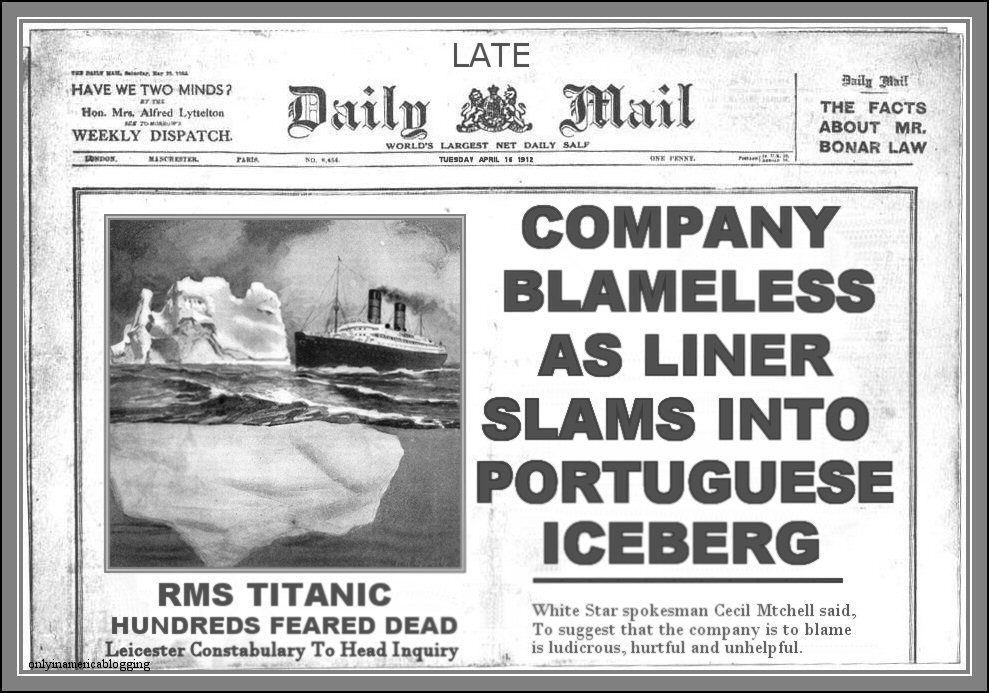 Because closing illegal smelters in your own backyard forces the corporations to build unsafe facilities in other places….or something like that.
Because closing illegal smelters in your own backyard forces the corporations to build unsafe facilities in other places….or something like that.
EPA Challenges State Clean-Up of Frisco Smelter Waste
 Despite denying that it was submitting comments on the state's plan for cleaning up the recently closed Exide lead smelter, the Environmental Protection Agency turned in a sometimes scathing assessment of Austin's proposal to allow the company to treat prohibited hazardous waste that still lies buried in its landfills in Frisco.
Despite denying that it was submitting comments on the state's plan for cleaning up the recently closed Exide lead smelter, the Environmental Protection Agency turned in a sometimes scathing assessment of Austin's proposal to allow the company to treat prohibited hazardous waste that still lies buried in its landfills in Frisco.
"The landfill is not permitted or constructed as a hazardous waste unit. Please clarify the regulatory/statutory provisions TCEQ is following that would allow for treatment of hazardous waste in the landfill," wrote EPA Associate Director Susan Spalding in a five-page letter sent to the Texas Com mission on Environmental Quality (TCEQ) on January 25th.
News of the Agency's comments comes on the eve of a public meeting scheduled by Exide for Wednesday night at the historic Frisco Depot to explain its clean-up operation.
Besides criticizing the on-site treatment of the hazardous waste, EPA also had a harsh review of the way Exide and TCEQ had identified areas of the current landfill with concentrated lead wastes that needed treatment, suggesting four times as much sampling as the company had proposed, and TCEQ had approved.
EPA also noted that a closed landfill in Frisco was already leaking hazardous levels of lead and selenium and suggested that the treatment method Exide is using in its current landfill was not going to be effective.
But in what may be a crushing blow to the company's plans to keep the wastes it generated for almost five decades buried in Frisco permanently, EPA stated that if the current landfill had been used for disposal after 2011 sampling to determine clean-up, which it almost certainly has,"This may require removal of all material" in the landfill.
Many of the problems cited by the Agency are the same ones citizens have been complaining about since Exide announced its unusual scheme to try to treat its illegal hazardous waste in place in its Frisco landfill, instead of digging it up and re-burying it in an official, licensed hazardous waste disposal site.
Exide does not have a permit to handle or dispose of hazardous waste. It's landfill is classified as a "non-hazardous waste" disposal site. The hazardous waste inside of it was discovered by inspectors several years ago.
Citizen groups have said Exide must apply for a full Resource Conservation and Recovery Act permit in order to deal with its prohibited wastes. EPA's letter seems to suggest that the Agency agrees.
Besides commenting on the landfill plans, EPA's letter also seeks changes in the dust controls guiding the smelter clean-up, and the public release of information about the clean-up.
Copies of the EPA letter can be downloaded from the Frisco Unleaded website here.
"We're very appreciative that EPA changed its mind and decided to comment on the ridiculous plans by Exide and TCEQ to use the same treatment method on this hazardous waste that failed to work the first time," said Colette McCadden, Chair of Frisco Unleaded, the citizens group who successfully campaigned to close the old smelter last year.
"We hope the EPA continues to provide needed oversight to what Exide and the state are doing – or not doing."
Other groups were more cautious.
"It's a pleasant surprise to see EPA comment so bluntly about the more absurd parts of the proposed Exide clean-up," said Jim Schermbeck of Downwinders at Risk. "My hope is that this is only the beginning of a new level of review for Exide by the Agency in light of the USA Today's "Ghost Factory" series chronicling what happens when it's not paying such attention. Only time will tell."
They’re Not Asking Your Permission
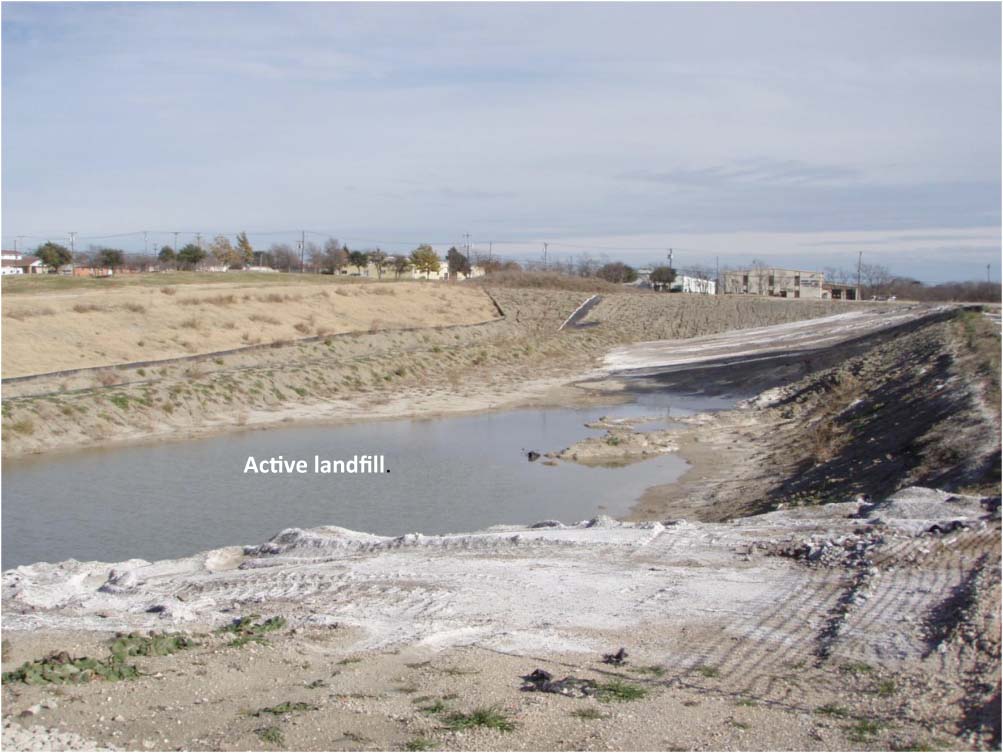 Exide and the State are planning Frisco's future without it's residents.
Exide and the State are planning Frisco's future without it's residents.
This Wednesday night may be one of the few times they can object in person.
Plans are proceeding for Exide to leave landfills full of its lead smelter waste in Frisco….forever
Landfills of lead on the edge of downtown that will pose a constant public health threat and economic dead zone
Landfills of lead along the banks of Stewart Creek as it flows downstream into the City's new "Grand Park"
Join us in saying no to their lead-filled future of Frisco.
Exide's Public Meeting on their lead smelter "Clean-up"
THIS WEDNESDAY NIGHT
7:00 pm
Frisco Depot
6499 Paige Street
(in the Historic District by Babe's)
Whether Frisco residents like it or not, Exide and the State of Texas are deciding to let millions of pounds of lead waste stay buried in Frisco forever – and the current City Council isn't trying to stop them.
While the city bought the less-contaminated outer ring of the Exide lead smelter, the most toxic part of the facility is still owned by Exide.
The City of Frisco has said that it won't interfere in the way the company and state decide to handle the tons of lead waste buried in this area, which stretches from Stewart Creek to the edge of downtown.
Exide, the state, and this city council are all deciding that it's easier just to leave lead contamination permanently buried in place in the middle of Frisco instead of moving it away from people and flowing water.
If citizens don't show up and fight back against these plans, Frisco residents will be dealing with lead contamination issues for decades – just like other communities that didn't have their lead smelter waste cleaned-up completely either.
A former Exide smelter site still sits abandoned in Dallas, some two decades after it closed, surrounded by monitoring wells and a chain link fence. We can't let that happen here.
Many residents sent e-mails to Exide last week saying they wanted a complete clean-up of its lead waste in Frisco. Now they need to come in person with the same message.
Frisco residents have to stand up for their home and community. Nobody at Exide or in government is.
